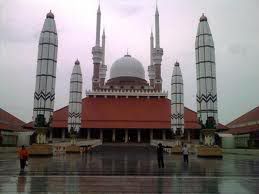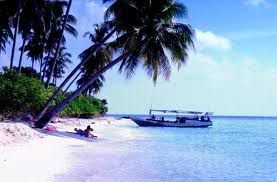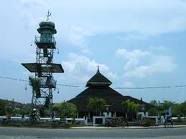Bali is
 an Indonesian island located at 8°25′23″S, 115°14′55″ECoordinates: [show location on an interactive map] 8°25′23″S, 115°14′55″E, the western most of the Lesser Sunda Islands, lying between Java to the west and Lombok to the east. It is one of the country's 33 provinces with the provincial capital at Denpasar towards the south of the island. The island is home to the vast majority of Indonesia's small Hindu minority. It is also the largest tourist destination in the country and is renowned for its highly developed arts, including dance, sculpture, painting, leather, metalworking and music.
an Indonesian island located at 8°25′23″S, 115°14′55″ECoordinates: [show location on an interactive map] 8°25′23″S, 115°14′55″E, the western most of the Lesser Sunda Islands, lying between Java to the west and Lombok to the east. It is one of the country's 33 provinces with the provincial capital at Denpasar towards the south of the island. The island is home to the vast majority of Indonesia's small Hindu minority. It is also the largest tourist destination in the country and is renowned for its highly developed arts, including dance, sculpture, painting, leather, metalworking and music.Bali h
 as been inhabited since early prehistoric times firstly by descendants of a prehistoric race who migrated through mainland Asia to the Indonesian archipelago, thought to have first settled in Bali around 3000 BC.[citation needed] Stone tools dating from this time have been found near the village of Cekik in the island's west.
as been inhabited since early prehistoric times firstly by descendants of a prehistoric race who migrated through mainland Asia to the Indonesian archipelago, thought to have first settled in Bali around 3000 BC.[citation needed] Stone tools dating from this time have been found near the village of Cekik in the island's west.Balinese culture was strongly influenced by Indian, and particularly Sanskrit, culture, in a process beginning around the 1st century AD. The name Balidwipa has been discovered from various inscriptions, including the Blanjong charter issued by Sri Kesari Warmadewa in 913 AD and mentioning Walidwipa. It was during this time that the complex irrigation system subak was developed to grow rice. Some religious and cultural traditions still in existence today can be traced back to this period. The Hindu Majapahit Empire (1293–1520 AD) on eastern Java founded a Balinese colony in 1343. When the empire declined, there was an exodus of intellectuals, artists, priests and musicians from Java to Bali in the 15th century.
The
 First European contact with Bali is thought to have been when Dutch explorer Cornelis de Houtman arrived in 1597, though a Portuguese ship had foundered off the Bukit Peninsula as early as 1585.[citation needed] Dutch rule over Bali came later, was more aggressively fought for, and was never as well established as in other parts of Indonesia such as Java and Maluku.
First European contact with Bali is thought to have been when Dutch explorer Cornelis de Houtman arrived in 1597, though a Portuguese ship had foundered off the Bukit Peninsula as early as 1585.[citation needed] Dutch rule over Bali came later, was more aggressively fought for, and was never as well established as in other parts of Indonesia such as Java and Maluku.In the 1840s, a presence in Bali was established, first in the island's north, by playing various distrustful Balinese realms against each other. The Dutch mounted large naval and ground assaults first against the Sanur region and then
 Denpasar. The Balinese were hopelessly overwhelmed in number and armament, but rather than face the humiliation of surrender, they mounted a final defensive but suicidal assault, or puputan. Despite Dutch demands for surrender, an estimated 4,000 Balinese marched to their death against the invaders. Afterwards the Dutch governors were able to exercise little influence over the island, and local control over religion and culture generally remained intact.
Denpasar. The Balinese were hopelessly overwhelmed in number and armament, but rather than face the humiliation of surrender, they mounted a final defensive but suicidal assault, or puputan. Despite Dutch demands for surrender, an estimated 4,000 Balinese marched to their death against the invaders. Afterwards the Dutch governors were able to exercise little influence over the island, and local control over religion and culture generally remained intact.Japan occupied Bali during World War II during which time a Balinese military officer, Gusti Ngurah Rai, formed a Balinese 'freedom army'. Following Japan's Pacific surrender in August 1945, the Dutch promptly returned to Indonesia, including Bali, immediately to reinstate their pre-war colonial administration. This was resisted by the Balinese rebels now using Japanese weapons.
On 20
 November 1946, the Battle of Marga was fought in Tabanan in central Bali. Colonel I Gusti Ngurah Rai, 29 years old, finally rallied his forces in east Bali at Marga Rana, where they made a suicide attack on the heavily armed Dutch. The Balinese battalion was entirely wiped out, breaking the last thread of Balinese military resistance. In 1946 the Dutch constituted Bali as one of the 13 administrative districts of the newly-proclaimed Republic of East Indonesia, a rival state to the Republic of Indonesia which was proclaimed and headed by Sukarno and Hatta. Bali was included in the "Republic of the United States of Indonesia" when the Netherlands recognised Indonesian independence on Dec. 29, 1949. In 1950 Bali officially renounced the Dutch union and legally became a province within the Republic of Indonesia.
November 1946, the Battle of Marga was fought in Tabanan in central Bali. Colonel I Gusti Ngurah Rai, 29 years old, finally rallied his forces in east Bali at Marga Rana, where they made a suicide attack on the heavily armed Dutch. The Balinese battalion was entirely wiped out, breaking the last thread of Balinese military resistance. In 1946 the Dutch constituted Bali as one of the 13 administrative districts of the newly-proclaimed Republic of East Indonesia, a rival state to the Republic of Indonesia which was proclaimed and headed by Sukarno and Hatta. Bali was included in the "Republic of the United States of Indonesia" when the Netherlands recognised Indonesian independence on Dec. 29, 1949. In 1950 Bali officially renounced the Dutch union and legally became a province within the Republic of Indonesia.The
 1963 eruption of Mount Agung killed thousands, created economic havoc and forced many displaced Balinese to be transmigrated to other parts of Indonesia.
1963 eruption of Mount Agung killed thousands, created economic havoc and forced many displaced Balinese to be transmigrated to other parts of Indonesia.In 1965, after a failed coup d'etat in Jakarta against the national government of Indonesia, Bali, along with other regions of Indonesia most notably Java, was the scene of widespread killings of (often falsely-accused) members and sympathizers of the Communist Party of Indonesia (PKI) by right-wing General Suharto-sponsored militias. Possibly more than 100,000 Balinese were killed although the exact numbers are unknown to date and the events remain legally undisclosed.[2] Many unmarked but well known mass graves of victims are located around the island.
On October 12, 2002, a car bomb attack in the tourist resort of Kuta killed 202 people, largely foreign tourists and injured a further 209. Further bombings occurred three years later in Kuta and nearby Jimbara
- kuta
- nusa dua
- sanur
- denpasar city
- uluwatu temple
- ubut
- sukowati
- mas
- celuk
- batubulan
- batuan
- sangeh
- peliatan
- goa gajah
- tampak siring
- lovina
- besakih temple
- kintamani
- trunyan
- tanah lot temple
- gowa lawah temple
- kerta gosa
- west bali national park
- menjangan island
- nusa lembongan island
- bedugul
- tulamben
- amed
- ujung
- tenganan
- munduk
- pumeteran
- jatiluwe





 06.09
06.09
 obyek wisata indonesia
obyek wisata indonesia






 Posted in:
Posted in: 






























